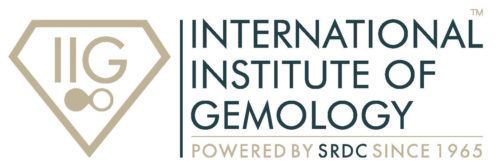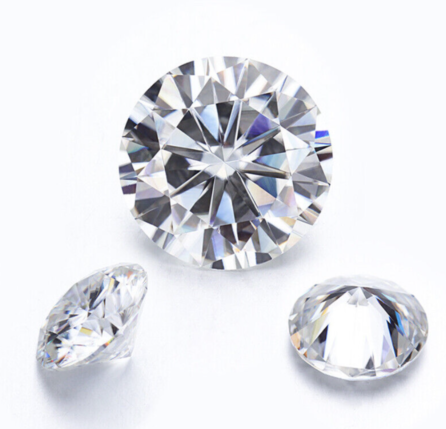|
Getting your Trinity Audio player ready...
|
Simulated diamonds, also called diamond simulants, may look like diamonds, but they don’t have the same chemical, physical and optical properties. Gemologists call these look-alike counterparts as “simulants.” Natural materials, such as colorless quartz, topaz, sapphire, beryl and especially zircon, have been used as diamond simulants for centuries.
Each simulant has unique properties, so it is difficult to compare simulants to diamonds as a whole. Overall though, diamond is harder than any simulant. The Mohs Scale rates the hardness of gems and minerals. Diamond — a 10 — is at the top, making it one of the hardest natural substances on earth. This means that most diamonds will hold up to daily wear and tear, while many simulants might soon develop scratches and visible abrasions, especially along facet junctions. Also, because of their superior hardness, diamonds can take a better polish than other gems or simulants. This means diamonds have a brighter luster than most simulants.
Diamond simulants are materials that closely resemble the appearance of natural diamonds but have different chemical compositions and physical properties. A lot of the well-liked diamond simulants nowadays, like cubic zirconia and moissanite, are actually man-made gems created in labs.
It’s important to consider the density of simulants, which can affect their size perception. Simulants denser than diamonds, like GGG, might look smaller for the same carat weight, while less dense ones could seem larger. Additionally, while diamonds usually have more fire than simulants, a few, like synthetic moissanite and synthetic rutile, exhibit more fire. Some like this intense fire, but others feel it highlights the stone’s non-diamond nature.
Here are some of the most popular diamond simulants and their plusses and minuses
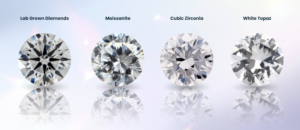
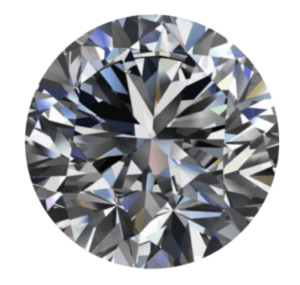
Cubic Zirconia or (CZ):
Cubic zirconia is the cubic crystalline form of zirconium dioxide. The synthesised material is hard and usually colorless.
Physical: CZ is relatively soft with a hardness of about 8.5 on the Mohs Scale, which makes it prone to scratches over time.
Optical: It displays high brilliance and fire due to its strong dispersion. The refractive index is lower than that of diamonds, affecting the way light bends through it.

Moissanite:
Moissanite is a naturally occurring mineral made of silicon carbide in different crystalline forms. This rare mineral was first discovered by the chemist Henri Moissan in 1893. In recognition of his discovery, the mineral form of silicon carbide was named moissanite in his honor.
Physical: Moissanite is very hard, with a hardness of around 9.25 on the Mohs Scale, making it quite resistant to scratches.
Optical: It exhibits remarkable fire and brilliance due to its high dispersion and refractive index, outshining many other gems.
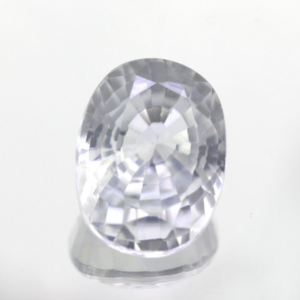
Zircon:
A natural stone, zircon is the oldest stone on earth.
Physical: Luster is Vitreous to Adamantine, sometimes looks oily. It is also doubly refractive.
Optical: It has fire close to that of diamond.
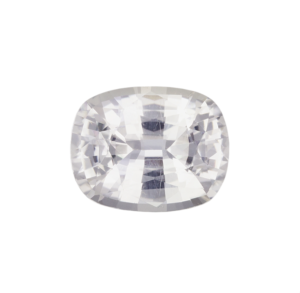
White Sapphire:
A white sapphire is any gem-quality corundum that’s colorless, or white.
Physical: White sapphire has a good hardness of 9 on the Mohs Scale, contributing to its durability.
Optical: While it lacks the fire of diamonds, its brightness is notable due to a refractive index similar to diamonds.
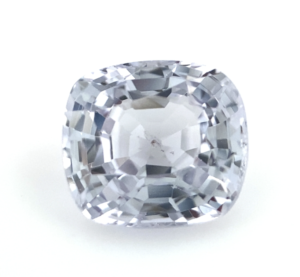
White Spinel:
White spinel was a commonly used diamond simulant before the introduction of cubic zirconia. It’s an aluminum oxide mineral with varying magnesium and iron content. It occurs as colorless crystals or white to grayish-white grains.
Physical: Synthetic spinel possesses a moderate hardness around 8 on the Mohs Scale.
Optical: It doesn’t exhibit as much fire or brilliance as diamonds, with lower dispersion and refractive index values.
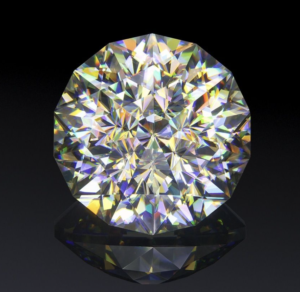
Synthetic Rutile:
Synthetic rutile is a lab-created version of natural rutile, which is a mineral composed mainly of titanium dioxide. Its brilliance and sparkle can be quite remarkable due to its dispersion and refractive index.
Physical: – Synthetic rutile is relatively hard, with a hardness of around 6 to 6.5 on the Mohs Scale. It has a high refractive index, which means it can bend and reflect light strongly.
Optical: – Synthetic rutile has high dispersion, which is responsible for its ability to create colorful flashes of light, similar to the fire seen in diamonds. It is doubly refractive, meaning that you will see a double image of its facets, which may make the inside of the stone appear blurry. Synthetic rutile is also often slightly yellowish.
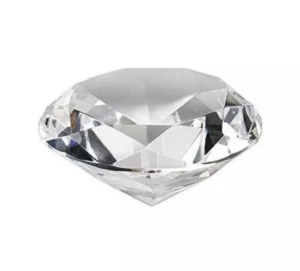
Glass:
Glass is an amorphous form of silica with various percentages of additives; that has been used as a gemstone for millennia.
Physical: Glass is relatively soft with a hardness of about 5.5 on the Mohs Scale, making it susceptible to scratches.
Optical: Its sparkle is modest due to lower dispersion and refractive index compared to diamonds.
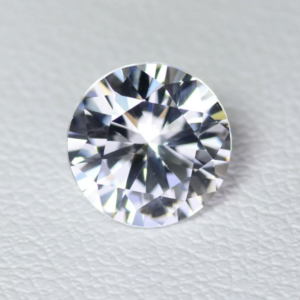
YAG (Yttrium Aluminum Garnet):
Yttrium aluminium garnet is a synthetic crystalline material of the garnet group.
Physical: YAG has moderate hardness around 8.25 on the Mohs Scale.
Optical: It displays moderate fire and brilliance, with a refractive index that falls between glass and diamond values.
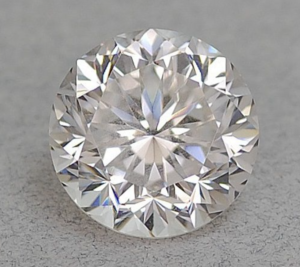
Gadolinium Gallium Garnet (GGG)
Gadolinium gallium garnet is a man-made diamond simulant that entered the market in the 1960’s. Today it is rarely used as a gemstone, and is instead manufactured for optical and industrial uses.
Physical: GGG is the good mechanical, thermal, and optical properties. It has a cubic lattice, a density of 7.08 g/cm3 and its Mohs hardness is variously noted as 6.5 and 7.5.
Optical: It is typically colorless.
Advantages And Drawbacks
Diamond simulants have many advantages and can be a good choice for a ring stone. Still, you’ll see them used in other jewelry, thanks to their many qualities.
Still, much like any other stone, a diamond simulant has drawbacks. For these stones, the issue is usually in the durability since many of them are somewhat brittle.
Do you need help making up your mind? These pros and cons can help you.
Pros:
- Lab-Made– diamond simulants are made in labs, so they’re carefully curated to perfection. You can find many different diamond simulants made from various materials.
- Easy to Clean– these are typically easy to clean with soapy water, so you won’t have to get your stone professionally cleaned. Many can be cleaned using steam or ultrasonic cleaning procedures.
- Eco-friendly– did you know that mining diamonds causes a wreck to the environment? Even some ethically mined stones aren’t, in fact, friendly to landscapes and animals. A diamond simulant is created in a lab, meaning that no mining takes place. This makes it eco-friendly.
- Conflict-free– the mining industry often involves poor working conditions, child labor, and human rights violation. Simulants are created in labs that don’t contribute to the problems typically associated with the mining industry. A lab-created diamond is easy to track back to where it came from.
- Affordable –a diamond simulant often costs up to 80% less than the real thing. This makes it a perfect affordable option if you’re on a budget. You still get brilliance and shine, but for a much lower price.
Cons:
- Durability– the biggest concern with diamond simulants is their durability. Still, it often depends on the particular stone you go for since some are more brittle than others. Also, simulants are relatively easy to scratch, whereas real diamonds are far more resistant and durable.
- Reflective Index– simulated diamonds don’t shine and reflect light the same way as real diamonds. Again, it depends on the particular stone you go for. For example, moissanite has a higher index than a real diamond, giving off the “disco-ball” effect with its overbearing shine. Cubic zirconia has a lower index than real diamonds and often gives off a “rainbow effect”.
These individual characteristics guide gemologists in identifying these simulants from natural diamonds. Differences in hardness, brilliance, fire, and the way they interact with light are key factors in distinguishing them.
 Simulated Diamonds Vs Natural Diamonds
Simulated Diamonds Vs Natural Diamonds
Generally, diamonds are much harder than any simulant, scoring a perfect 10 on the Mohs Scale, which rates gem hardness. This makes diamonds incredibly durable for everyday wear, while simulants can easily develop scratches and abrasions, particularly at facets. Diamonds also outshine simulants due to their superior hardness, allowing them to be polished to a brighter luster.
 Diamond Simulant Vs Lab-Grown Diamond: Unveiling the Difference
Diamond Simulant Vs Lab-Grown Diamond: Unveiling the Difference
In the world of sparkling stones, distinctions matter. A lab-grown diamond and a diamond simulant might seem similar, but they have essential differences that set them apart.
Diamond Simulant:
A diamond simulant is a stone designed to resemble a diamond, yet it doesn’t fully possess the same properties. Cubic zirconia, for instance, is a common inexpensive diamond simulant. While it might initially dazzle, it falters in durability. Over time, it scratches and loses its shine, making it less viable as a long-term diamond alternative.
Moissanite is another example. It’s the second hardest stone after diamonds, crafted from silicon carbide. Compared to cubic zirconia, it offers better durability and longevity. As a substitute for diamonds, moissanite stands as a more reasonable choice due to its durability and relative affordability.
Lab-Grown Diamonds:
Distinct from simulants, lab-grown diamonds are a league of their own. Crafted from carbon, just like natural diamonds, they boast the same atomic composition. This means they share the genuine brilliance and essence of natural diamonds. Unlike simulants, lab-grown diamonds are genuine diamonds – the result of advanced scientific processes. Their properties are equivalent to those of diamonds mined from the Earth.
In essence, while diamond simulants like cubic zirconia and moissanite can imitate the visual appeal of diamonds to varying degrees, they don’t embody the authentic composition and attributes of true diamonds. On the other hand, lab-grown diamonds stand as real, ethically sourced diamonds cultivated in controlled environments, embracing the splendor and legacy of natural diamonds.
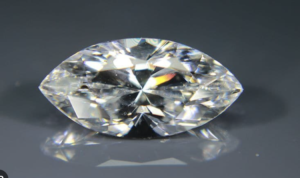
Should I buy Simulant Diamonds?
Choosing between diamonds and diamond simulants involves multiple factors. Simulants are often chosen for their affordability compared to similarly sized, colored, and clear diamonds.
However, whether they’re a good choice depends on your willingness to appreciate each simulant’s distinct qualities. While none matches diamond’s hardness, some are sturdy enough for everyday ring wear. Brilliance and fire can vary, with a few simulants even exceeding diamond’s fire. Ultimately, the decision hinges on your preference. Whether less or more brilliance, it’s best to see the simulant in person to determine if its unique sparkle aligns with your taste.
